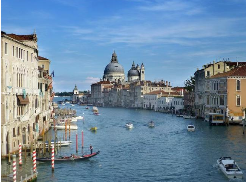Top of the Arts Why British architecture looks so good!
3 min read
Architecture, which is the highest art, reaches the Platonic sublime, the mathematical law, the philosophical thought, the sense of harmony produced by emotional harmony. That’s what architecture is for. “Music is flowing architecture, architecture is frozen music”This sentence and its image reveal the inner and outer connection between music and architecture, the common aesthetic information, and the extremely profound artistic connotation.This is certainly true of 500-year-old British architecture.
From the old Saxon architecture to the modern Tudor architecture; From distinctive Gothic architecture to heavy red brick buildings; In the long river of time, British architecture is enough to peek into the interpretation of history, recording the vicissitudes of times, time travel.
When it comes to Britain, you probably know these famous buildings.【 British Museum 】St. Paul’s Cathedral【 Buckingham Palace 】Houses of Parliament and Big Ben
【 Westminster Abbey 】So, apart from the famous buildings, what other beautiful British buildings do you know?
Under these gorgeous and exquisite architectural design, what kind of artistic ingenuity is hidden?
“British architecture is the nobility of architecture”.
British style architecture has the characteristics of implicit, natural, elegant and noble. As an important branch of architectural style, these preserved art buildings embody the essence of British architecture over the past hundred years, which is magnificent without lack of cultural and artistic taste.
So, here is a fascinating tour of British art and architecture.
Art of church architecture.
There are well over 10,000 churches in England that can trace their roots back to the Middle Ages, and many of them go back even further.
Even in an area of poor construction, you may come across a fine rock church. This change is one aspect of the extraordinary attraction of the English church, no one church is like another.
And, behind the bewildering array of churches, there are objects and ornaments of a variety of styles that can all be attributed to a certain period. Take a trip back in time and see what you recognize the next time you walk by or visit a church.
AD 600-1200 Saxon and Norman churches.
Early English Gothic and costumed churches, 1200-1350 AD.
1350-1530 AD Vertical church Tudor, Stuart and Georgian church 1530-1830.
English country architecture Nestled among rolling hills or on shady paths, the English countryside is a timeless idyll, far removed from the bustle of the modern world. The author’s love of the village stems from painting and painting as a child.
When I was forced to study them for my travel book, I was surprised to find that their pasts were far more vibrant and interesting than the conventional picture you get.
Trevor hopes the book will open up a love affair with English villages and help you when you visit them, or guide you as you trace the history of your own.
The village of Stuart in Bedfordshire.The village of Finchfield in Essex.Whitewick Manor in the West Midlands.Art Deco. Art deco.
Art Deco evolved from the Art Nouveau movement at the end of the 19th century. Art Nouveau was an art style pursued by the middle class in Europe and America (mainly in Europe) at that time. Its main feature was the beautiful lines of the sensual nature, called organic lines.
The Art Deco style is most evident in commercial buildings, movie theaters and stores, and its modern style fits well with some corporate images. The roofs of early Art Deco buildings were often shaped like steps. The white facades are usually decorated with bright glazed tiles, and the doors are heavy and powerful, with stylized Egyptian or classical detailing.
By the 1930s, the exterior was less decorative and replaced with streamlined curves and angled Windows. The most famous example is the Hoover Building on the A40 West in London’s West End, which demonstrates the exquisite characteristics of jazz and streamlined modern school architecture.






